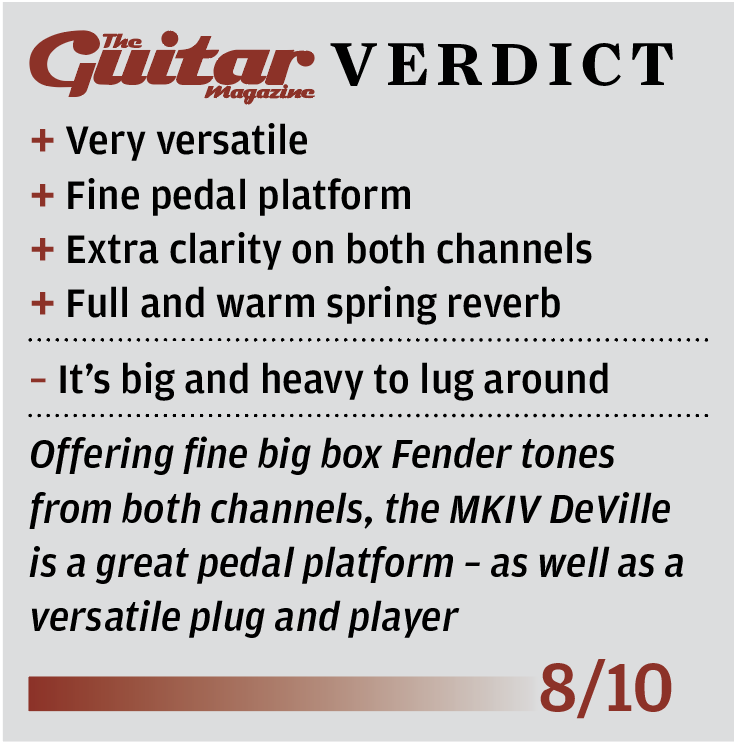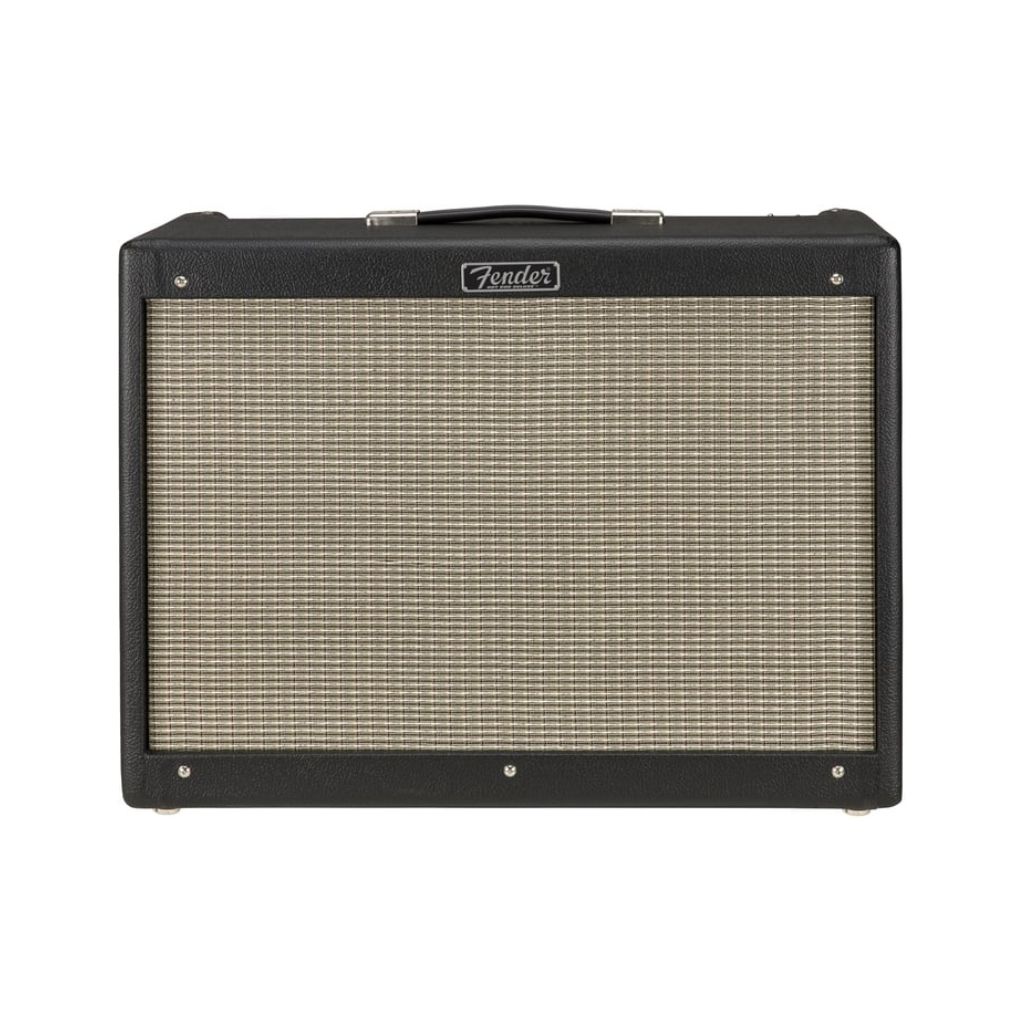Fender Hot Rod Deluxe IV & Hot Rod DeVille IV Review
Fender Hot Rods have been around for over 20 years, and 2018 sees the fourth generation hit the streets. We test the latest versions of two of the world’s most popular amps.
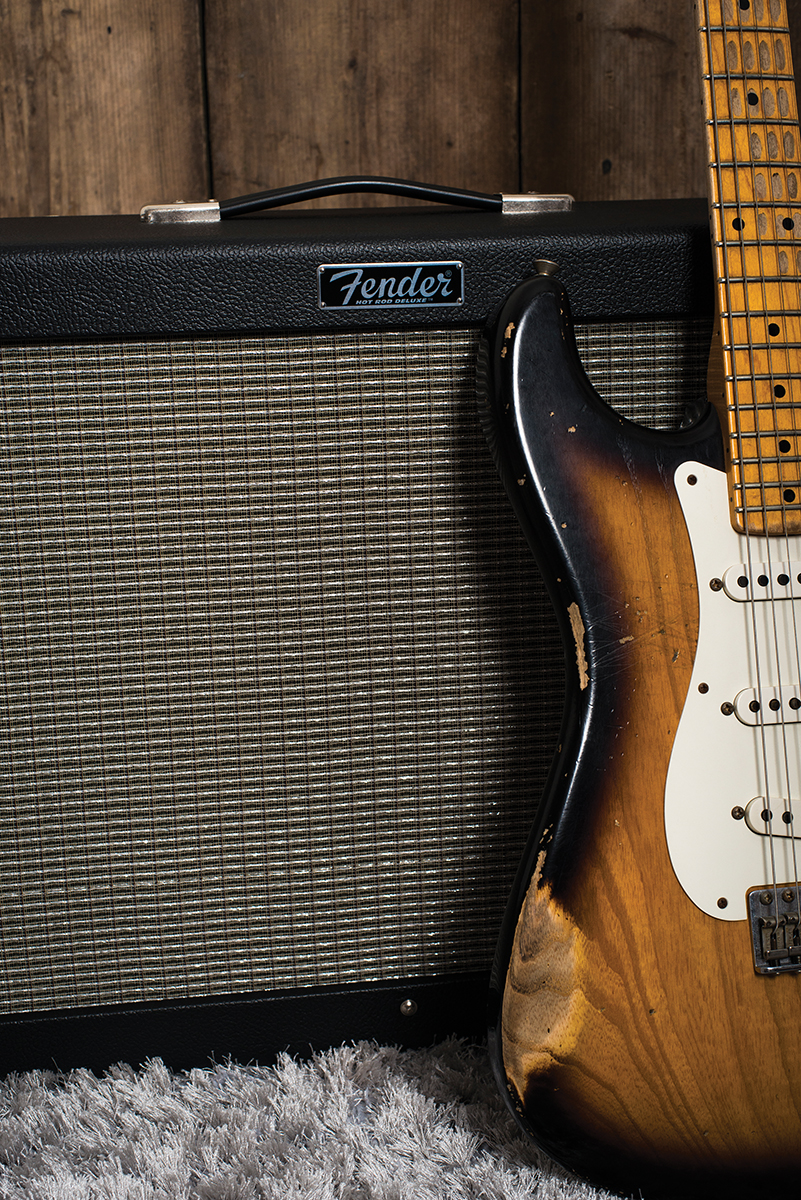
It’s strange that Fender’s Hot Rods never seem to feature on anybody’s list of classic amps. Strange because we’ve lost count of the occasions we have made our way up to a stage to check out how some guitarist is getting such a great tone, only to find an unassuming Hot Rod and a selection of pedals providing the muscle. With that in mind, Fender’s fourth revamp of the two-decade old range is big news for your average gigging guitar player.
Let’s see what they’ve done…
Upon unpacking our pair of Hot Rods – a Deluxe and its bigger brother, the DeVille – it’s immediately apparent that the aesthetic is still reminiscent of a modified tweed amp. It’s the look people achieved when they painted their narrow-panel tweed Twins and Supers black, and changed the speaker cloth to blackface spec back in the 60s. Hitherto, this tweed resemblance has been superficial, however things have taken a step closer with the latest Hot Rods, because they now feature solid pine cabinets, too.
This means that they’re slightly lighter than their forebears – 1.52kg and 1.72kg for the Deluxe and DeVille respectively. Other changes include ivory-coloured chicken-head control knobs to compliment the re-textured black control panel, a steel-reinforced strap handle, lightly-aged silver cloth and new speakers. The Deluxe features a single 12-inch Celestion A-Type and the DeVille gets a trouser-flapping pair.
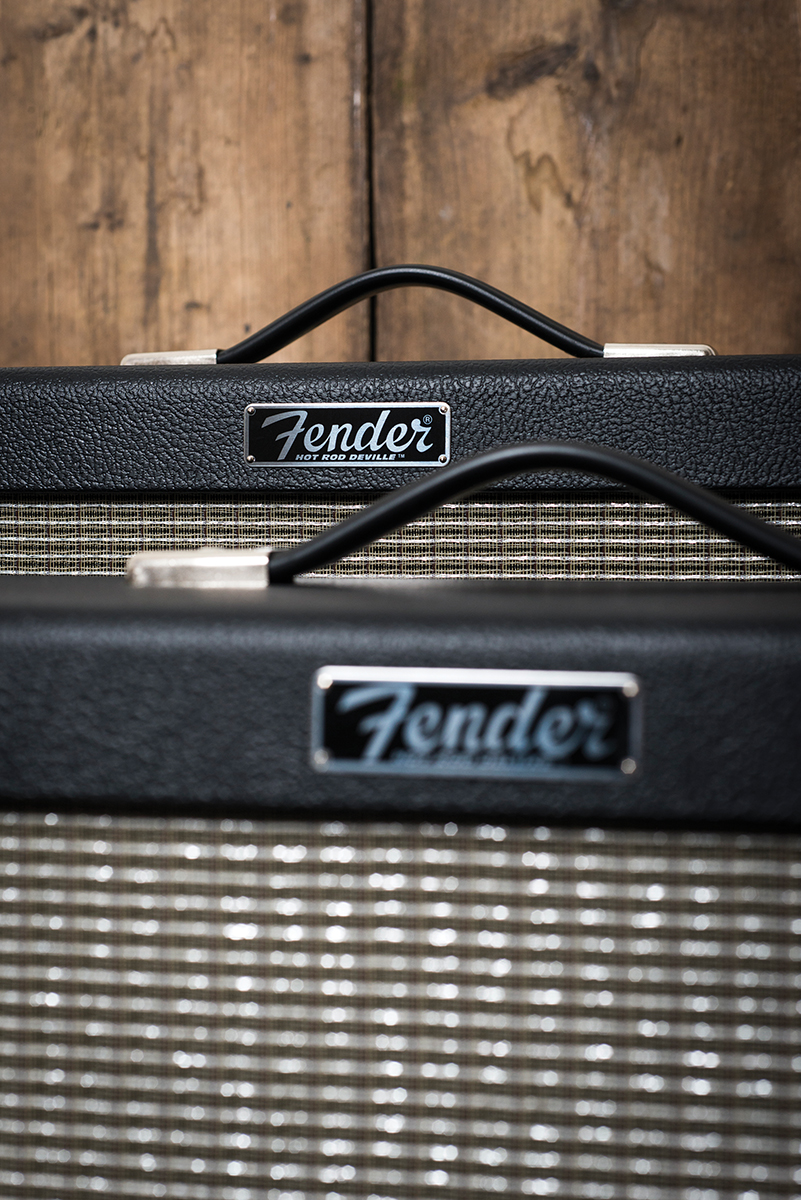
Inside, the preamp circuitry has been altered to provide better definition when the amps are overdriving, and the reverb tweaked for a smoother effect. Otherwise it’s more of the same and given the enduring popularity of Hot Rods, there’s nothing wrong with that.
Both amps feature two channels with shared presence and equalisation controls and hi/lo inputs. On the control panel, there are sockets for preamp output and power amp input. These can be used as an effects loop, or you can plug the preamp output from one Hot Rod into the power amp input of a second Hot Rod to run both simultaneously. The control panel of the first amp runs the second amp too – reverb and presence excepted.
In Use
Even with single coils, the Hot Rod Deluxe’s first channel doesn’t offer much in the way of clean headroom. Thankfully, the volume pot taper seems to provide a greater degree of fine control than we’ve experienced with earlier Hot Rods. It’s far easier to dial in the sweet spot where you can determine the amount of overdrive through playing intensity alone. This happens between three and four on the dial.

Ramp it up to around five and the Deluxe starts getting creamier and between six and seven you’re into quite heavy overdrive. All is good up to around eight, beyond which a ragged and slightly grainy distortion begins to manifest. At higher volume levels, things improve somewhat when the bright switch is disengaged and the midrange is boosted. Get the tone control settings right, with a strong injection of mids and the bright switch disengaged, and the Hot Rod Deluxe can sound unexpectedly tweedy.
Channel two is all about dirt. Below two on the drive control overdrive is moderate, but there’s a sudden jump to heavy drive and saturation increases fairly smoothly above that point. Towards maximum the HR Deluxe generates full-on metal levels of crunch and sustain.
Even so, there’s a more drive switch just in case you need a bit of extra dirt. Since the switch is doubled up on the footswitch, this is intended as a boost for soloing rather than an over the top button.
We think Fender has set the amount of lift about right and its effect is identical to turning up the drive control by around a third. There’s no significant change in tonality and far from things getting edgy or ragged, the quality of the distortion actually becomes smoother and sustain is vastly improved. Swapping over to a Les Paul, powerchords have massive girth and you can hang onto notes pretty much as long as you want.
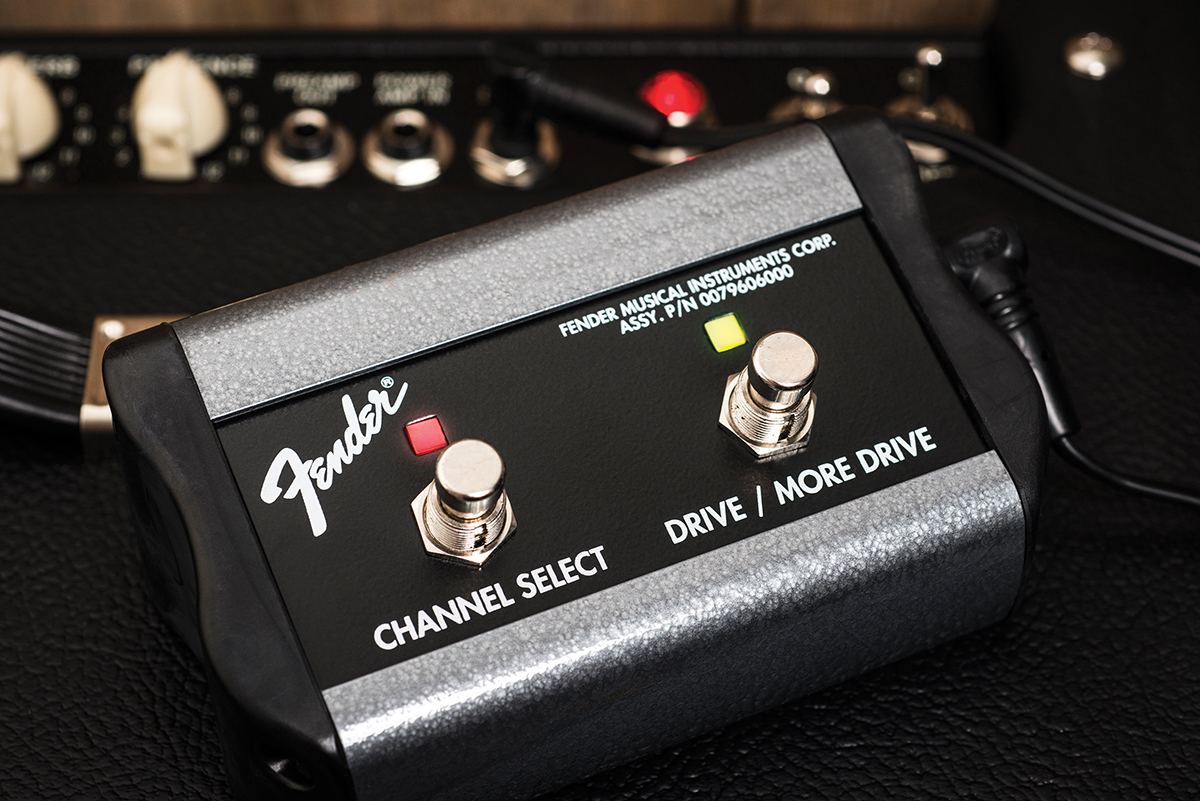
Most of the usable reverb range happens between one and three. Beyond this point things get seriously wet. The new reverb characteristic is thick, warm and very smooth. These revamped reverbs don’t quite do the splatty surf thing that Fender amplifiers are commonly known for. Instead you get a warm three-dimensionality that is more suited to modern ambient atmospherics than surfing California-style.
The above description applies to both amplifiers, but we do need to compare them. Although in a very similar ballpark tonally, there are clear differences when running a Stratocaster into the clean channels.
The Deluxe has a thicker midrange with a chewier overdrive texture and a more compressed dynamic response. In contrast, the Hot Rod DeVille sounds bigger, clearer, cleaner and brighter. It also has a far tighter and punchier response than its little brother.
Is it a case of better the DeVille you know? It all depends on how loud and clean you need your basic core amp tone to be.
We suspect that spreading the burden across two speakers in a larger cabinet accounts for most of the differences between the two models, and it’s more a matter of taste than one of a clear-cut winner and loser. The Deluxe’s midrange characteristics and smoother drive come closer to the tone and feel of some of the high-priced and hand-made amps you might find in premium guitar shops. However, for muscular, room-filling, big box Fender tones you’ll want to have the DeVille sat behind you.
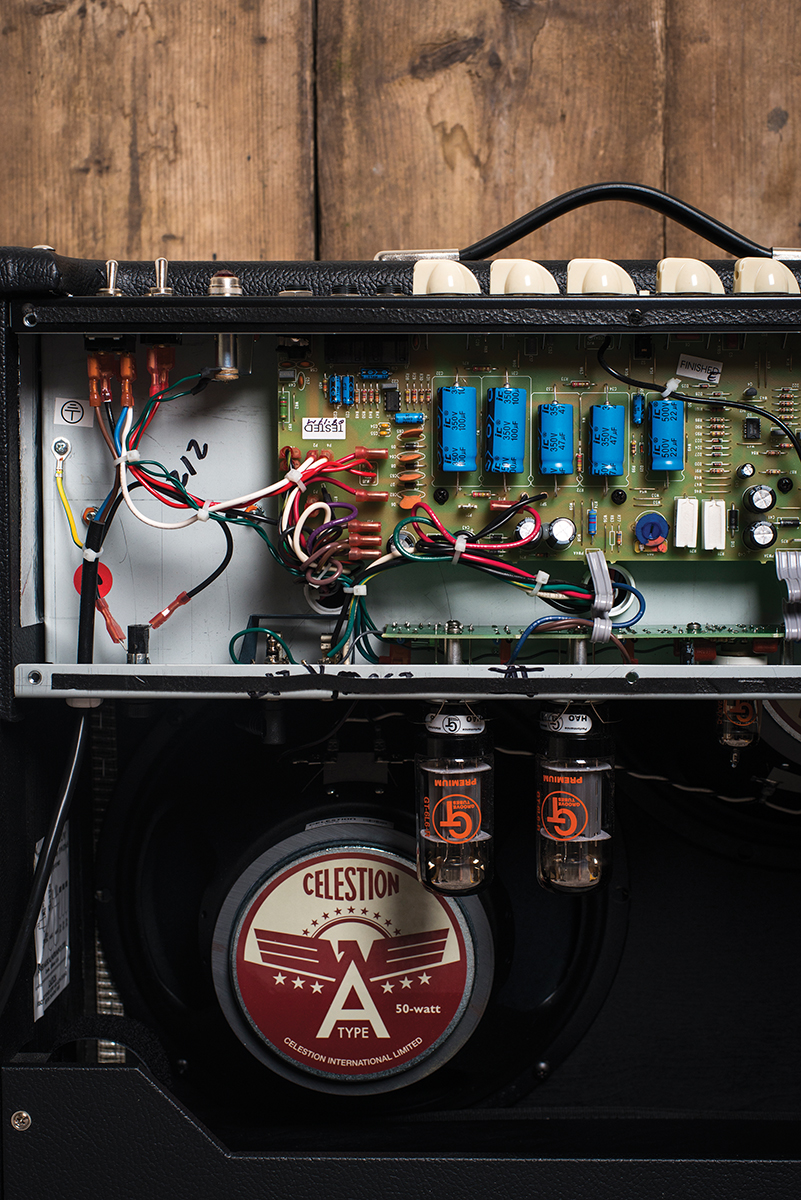
The Deluxe is more portable, but we find ourselves leaning towards the DeVille. All the tonal qualities we like about the former are even more apparent with the latter, but it’s as if a sonic curtain has been lifted to create another level of definition, articulation and low-mid punch.
Although we’ve previously had mixed feelings about the distortion characteristics of Hot Rod drive channels, both of these amps overdrive way more smoothly than we’re accustomed to. As such they would certainly cover most clean/crunch/solo requirements without any necessity to use pedals. Even so, these amps have proved vastly popular with pedal users and if that’s the way you like things, the DeVille is surely the way to go.
KEY FEATURES
Fender Hot Rod Deluxe IV
• PRICE £849
• DESCRIPTION 2-channel fixed bias valve combo with reverb and solid pine cabinet. Made in Mexico
• POWER RATING 40W
• VALVES 3x 12AX7, 2x 6L6
• CONTROL PANEL Presence, reverb, master volume, middle, bass, treble, drive select switch, drive volume, bright switch, standby, power
• REAR PANEL 2x speaker outs
• SPEAKER 1×12 Celestion A-Type
• DIMENSIONS 476 x 597 x 267mm
• WEIGHT 18.59kg/41lbs
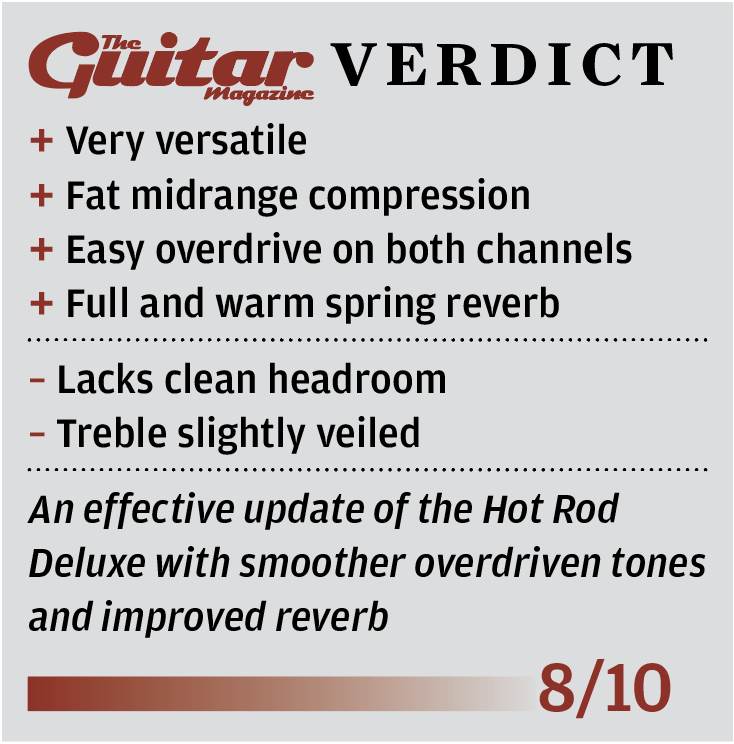
KEY FEATURES
Fender Hot Rod DeVille IV
• PRICE £999
• DESCRIPTION 2-channel fixed bias valve combo with reverb and solid pine cabinet. Made in Mexico
• POWER RATING 60W
• VALVES 3x 12AX7, 2x 6L6
• CONTROL PANEL Presence, reverb, master volume, middle, bass, treble, drive select switch, drive volume, bright switch, standby, power
• REAR PANEL 2x speaker outs
• SPEAKER 2×12 Celestion A-Type
• DIMENSIONS 533 x 616 x 250mm
• WEIGHT 25.06kg/55lbs
• CONTACT Fender UK 01342 331700, www.fender.com
